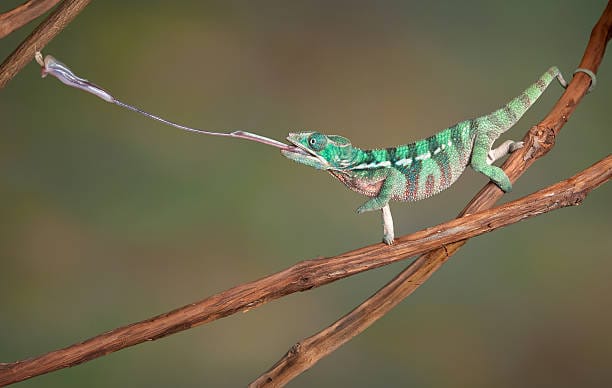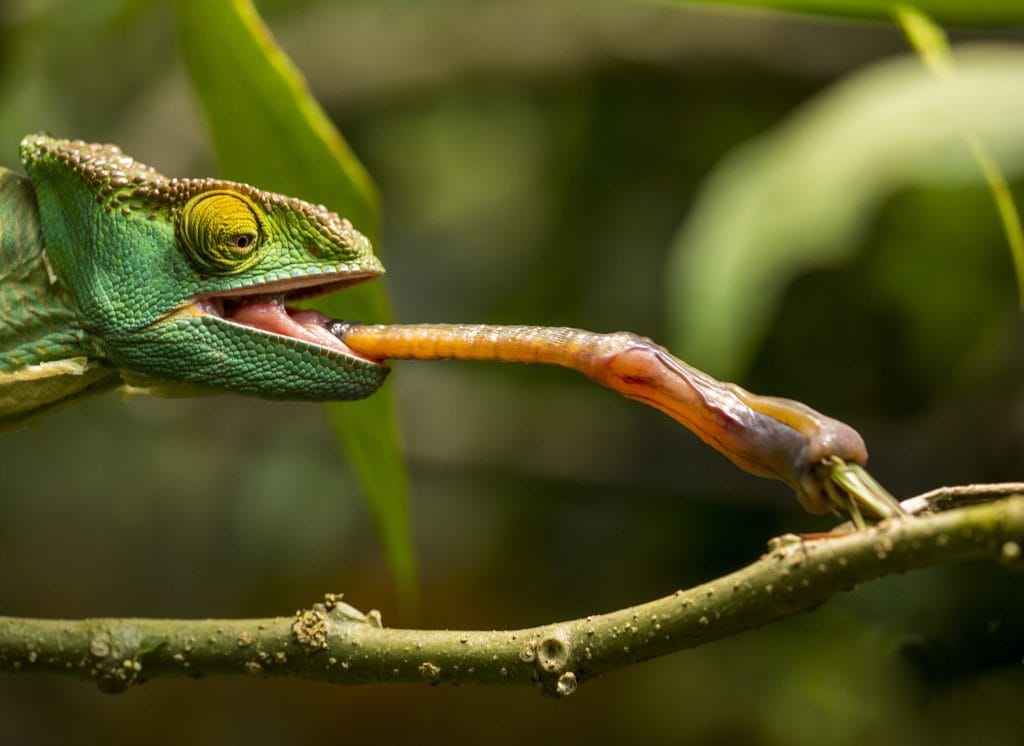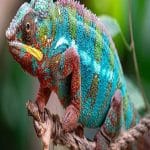
Image Credit – Hema
When we think of chameleons, the first thing that comes to mind is their color-changing skin. But just as fascinating—and perhaps even more astonishing—is the chameleons tongue. This unique adaptation is a perfect example of nature’s engineering at its best. Capable of launching out of the mouth at incredible speed and with pinpoint accuracy, the chameleon tongue is a biological marvel that deserves a closer look.
In this blog post, we’ll break down how the chameleon tongue works, its anatomy, and why it’s considered one of the fastest and most effective hunting tools in the animal kingdom.
Anatomy of a Chameleons Tongue

A chameleons tongue is an incredibly specialized organ. In fact, it can extend more than twice the length of the chameleon’s body—some tongues can reach over 2 feet in length! The tongue itself is made up of several parts:
- Accelerator muscle: A powerful muscle that wraps around a central rod of bone (known as the hyoid bone).
- Elastic tissues: These are the key to the tongue’s spring-loaded mechanism.
- Sticky pad: Located at the tip, this acts like a suction cup, grabbing onto insects in a flash.
What makes the chameleon tongue truly special is how all of these components work together to create a rapid and precise hunting tool.
How the Chameleons Tongue Works: The Science Behind the Snap
The action of the chameleons tongue resembles that of a slingshot. Here’s how it works step by step:
- Preloading: Before firing, the chameleon contracts the muscles around its tongue and builds up tension in the elastic tissues.
- Launch: Once enough tension is stored, the tongue is rapidly released. The energy stored in the elastic tissue is converted into kinetic energy, propelling the tongue forward.
- Targeting and Grabbing: The sticky pad at the end of the tongue hits the target insect with incredible precision, thanks to the chameleon’s excellent eyesight.
- Retracting: The retractor muscles pull the tongue and prey back into the mouth within a fraction of a second.
The whole process—from launch to capture—takes only about 0.07 seconds. That’s faster than the blink of an eye!
Why Is the Chameleons Tongue So Fast?
Chameleons rely on stealth and surprise to catch their prey. Unlike animals that chase, chameleons stay still and wait for insects to get close. Because of this hunting style, speed is crucial. The high speed of the chameleon tongue ensures the insect doesn’t have a chance to escape once targeted.
The combination of elastic energy, specialized muscles, and a highly evolved visual system makes the chameleon tongue not just fast but incredibly efficient.
Adaptation and Evolution
Interestingly, not all chameleons have the same tongue power. Smaller chameleons often have proportionally longer and more powerful tongues than their larger cousins. Scientists believe this evolved as a survival adaptation, helping smaller species catch enough food despite their size limitations.
Chameleons can even adjust the force and speed of their tongue based on the distance and size of the prey. This level of control is extremely rare in the animal world.
The chameleons tongue is more than just a cool party trick from nature—it’s a masterpiece of biological engineering. Its unique structure, lightning-fast speed, and surgical precision make it one of the most fascinating tools in the animal world. From tiny insects to flying prey, nothing escapes once that tongue is launched. Have any thoughts about this amazing reptile adaptation? Let us know in the comments and share your favorite animal superpower!
Frequently Asked Questions
How far can a chameleons tongue extend?
A chameleon’s tongue can extend up to twice the length of its body, sometimes reaching over 24 inches depending on the species.
Is the chameleon tongue the fastest in the animal kingdom?
It’s one of the fastest. While it doesn’t move the longest distance, its acceleration (0 to 60 mph in 1/100th of a second) makes it among the top contenders in the animal world.
What makes a chameleon tongue sticky?
The tongue tip is coated with mucus and has a suction-cup-like structure. This stickiness ensures prey is securely attached during retraction.



![Best budget UVB for chameleon beginners in [year] image](https://mychameleononline.com/wp-content/uploads/2025/07/image-14-150x150.png)



